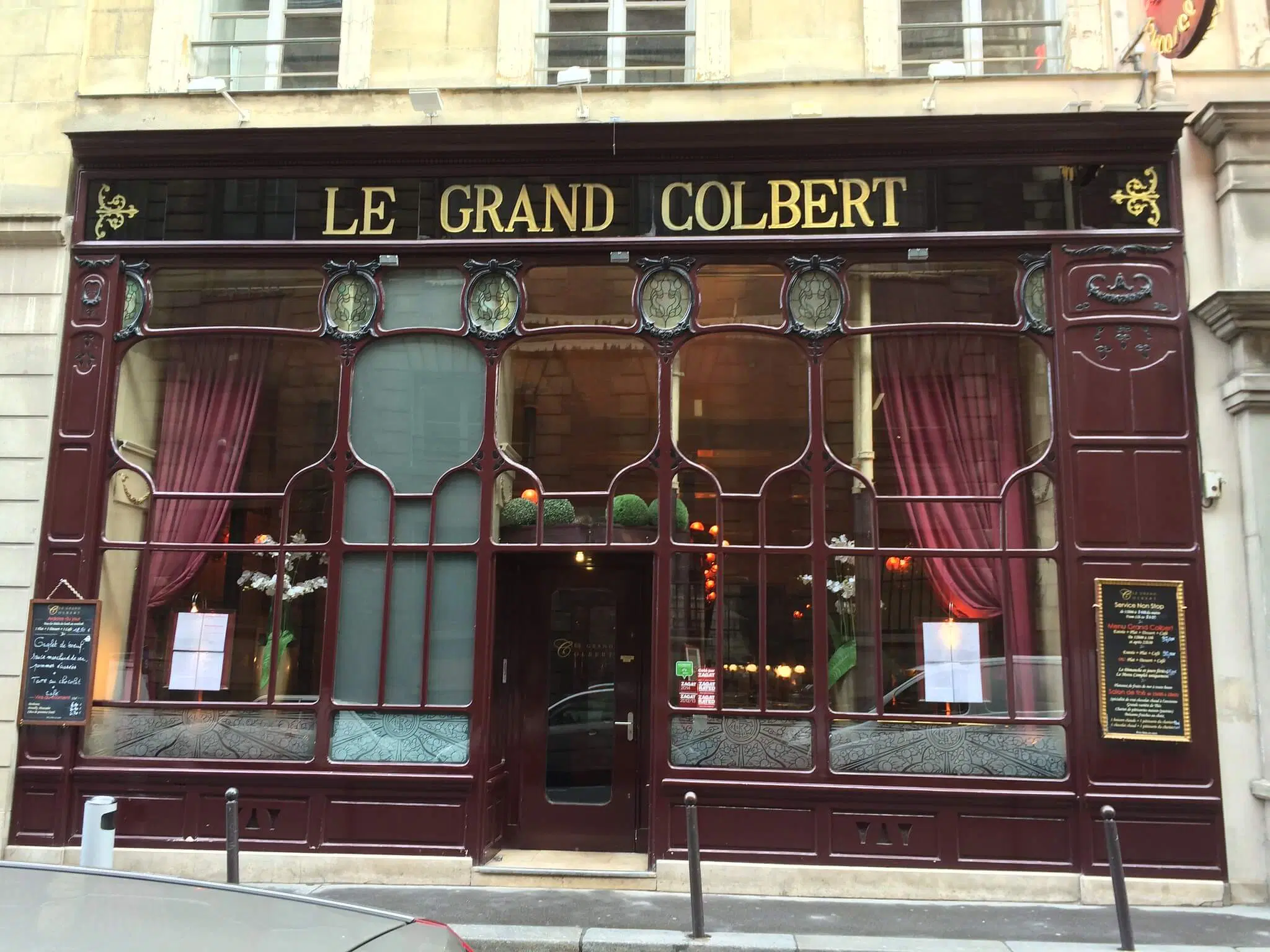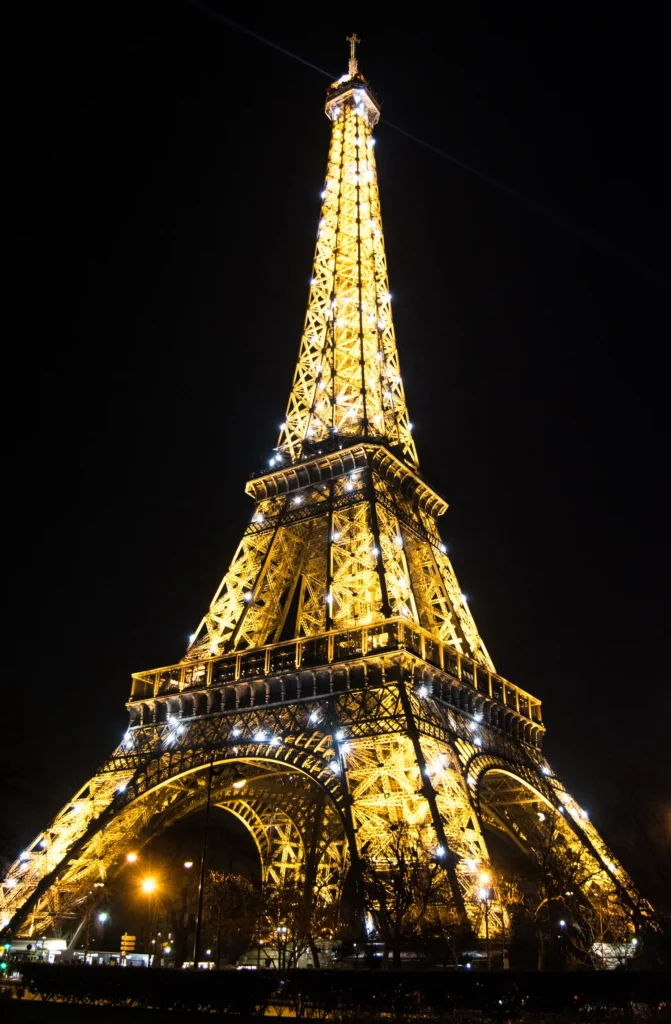Originally, during its construction in 1637 commissioned by Guillaume Bautru, Count of Serrant, the building was a mansion erected on the plans of the architect Louis le Vau1.
It was sold to Jean-Baptiste Colbert, the famous minister of Louis XIV in 1652, then to Philippe d’Orléans in 1719. In 1806, it was occupied by the state debt fund, until its sale in 1825. The mansion was then destroyed to make way for the current building and the opening of the Colbert gallery in 1828 which was to compete with the Vivienne gallery.
Under Louis-Philippe a novelty store called “Au Grand Colbert” opened its doors.
The name was kept until 1900 when it was transformed into a restaurant.
At the instigation of the National Library of France, the owner of the premises, it was renovated in all its original details in 1985 at the same time as the Colbert gallery. find in this large room, of an impressive architectural volume, six-meter walls, and vestiges with notably sculpted pilasters. There are also Pompeiian-style paintings on wood listed on the list of historic arts and rare mosaics on the ground.
Located in a corner of the Galerie Vivienne, a historic covered passageway in Paris, Le Grand Colbert is a traditional French brasserie that opened its doors in 1900. But the history of the site goes back much further. Tourists and local professionals come for lunch or dinner, not only for the fixed, reasonably priced cuisine but also if not more so for the Art Nouveau dining room
Serving hearty traditional French brasserie fare and large seafood platters, Le Grand Colbert is a great choice for visitors who want to enjoy a meal in iconically Parisian surroundings. It’s not a Michelin-star establishment, but this actually comes with a clear advantage: the restaurant is accessible to visitors on average budgets.
With its wall-to-ceiling mirrors, ornate murals, green plants and large zinc bar, the restaurant seems frozen in Belle-Epoque Paris, and that’s precisely its charm. There’s even an impressive, humorously pompous bust of the man the restaurant is named after– Jean-Baptiste Colbert, a minister to King Louis XIV– looming above one of the leather booths.
The striking tile-mosaic floors are identical to those found in the adjoining Galerie Vivienne and with good reason. Before it was transformed into a restaurant in the early 20th century, the Colbert was part of a separate covered galerie, built in 1825 and a rival to the Vivienne. This long legacy led to it being named a Parisian Heritage Site. The Galerie Colbert, incidentally, still exists, and boasts a striking rotunda topped with glass and adorned with statues.
Arriving at the Colbert, the first thing you’ll probably notice is how spacious it is a feature enhanced by the aforementioned mirrored walls. High ceilings, soft pink lights, painted wall decor, and deep leather booths instantly throw you into a bygone era; the Paris of bustling boulevards and théâtres populaires. From the Folies Bergère (famous for hosting the likes of Josephine Baker) to the Théâtre de la Renaissance, these were theaters and cabarets primarily catering to working-class audiences, and they symbolized a bold new period of modernity in the capital.
The servers are friendly, informative, and helpful, willing to fulfill requests that might be met with an eyebrow raise or a flat-out “non” elsewhere in Paris. When I dined there with a friend whose one-year-old baby was in tow with us, the servers graciously found us a table where we could comfortably fit the stroller to one side and were also happy to adjust menu items to my friend’s special dietary needs. This is a real quality to watch out for in a city where restaurants are sometimes less than accommodating on these sorts of counts.
Current owner Joël Fleury and his chef Steven Blondel offer a pleasantly accessible – if not especially inventive– menu of French classics, from blanquette de veau (a typical Gallic veal dish) to French-style rib steaks served with thick-cut fries. A la carte options include Sole Meunière with steamed potatoes, duck confit with garlicky potatoes and salad, roasted chicken, and beef tartare
Meanwhile, there’s a large selection of seafood dishes and platters that can include oysters, lobster, shrimp, mussels, crabs, or all of the above, and are best enjoyed with a glass of dry white wine, such as Pouilly-Fuissé or Chardonnay. And while menu options for vegetarians and vegans are not abundant, in recent years the restaurant has offered creative, attractive dishes such as vegetable “millefeuille” and vegetarian gratin.
For dessert, the “cafe gourmand” is something I highly recommend: this is a traditional collection of French desserts in miniature form from macarons to Paris-Brest puff pastry filled with hazelnut cream, to mini creme brulées, all served with a strong espresso. All the cakes and pastries included in this favorite dessert of indecisive dinners are delicious.
The restaurant’s full drink menu includes French and international wines from white to red, champagne, cocktails, aperitifs, and avec (after-dinner drinks). The hot chocolate and tea are also reputed to be good and are served primarily in the afternoon.
While you won’t necessarily get to sample the city’s most groundbreaking cuisine at this restaurant, the Colbert offers a pleasant, historic setting and good value for traditional French fare at lunch or dinner. Desserts are especially good and the service is attentive and accommodating.


